- Paraffin wax
-
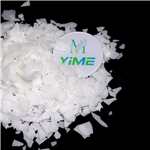
- $2.00 / 1KG
-
2024-04-19
- CAS:8002-74-2
- Min. Order: 100KG
- Purity: 99%
- Supply Ability: 1000kg
- Paraffin Wax
-
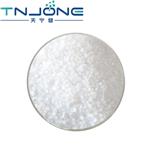
- $0.00 / 1kg
-
2024-04-02
- CAS:8002-74-2
- Min. Order: 1kg
- Purity: 99%
- Supply Ability: 1000kg
Related articles - Pharmacology of Paraffin wax
- Paraffin wax is a solid crystalline mixture mainly composed of straight-chain (normal) alkanes CnH2n+2(simplified as Cn) (90?9....
- Mar 2,2022
|
| Product Name: | Paraffin wax | | Synonyms: | PARAFFIN IN PASTILLE FORM 57-60 PH EUR,B;PARAFFIN IN BLOCK FORM 46-48 25 KG;PARAFFIN IN BLOCK FORM 42-44 1 KG;Paraffin 57-60, in pastille form Ph Eur,BP;Hard paraffin
Paraffin wax
Tissue Embedding Medium
Paraffin waxes and hydrocarbon waxes;Paraffin 52-54, in pastille form Ph Eur,BP,NF;Paraffin 57-60, in pastille form Ph Eur,BP,NF;PARAFFIN WHITE, PASTILLES, CONGEA-LING R ANGE 50-55 DEGREE C, EXTRA PURE, DAB | | CAS: | 8002-74-2 | | MF: | C21H27NO3 | | MW: | 341.44398 | | EINECS: | 232-315-6 | | Product Categories: | Cosmetic Ingredients & Chemicals;Lipids and Related Products;Lipids and Related ProductsPharmacopoeia (USP);Pharmacopoeia A-Z;Core Bioreagents;Lipids and Related ProductsProtein Structural Analysis;Optimization Reagents;Research Essentials;X-Ray Crystallography;Embedding MediaHematology and Histology;Embedding and Mounting Media;Microscopy Reagents;Routine Histology Stains;Engineering Polymers;Polymer Science;Waxes and Oils | | Mol File: | 8002-74-2.mol | 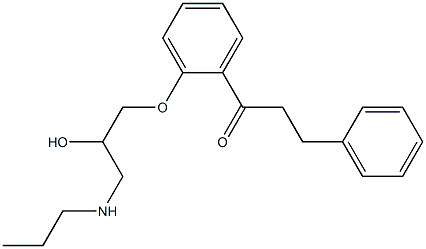 |
| | Paraffin wax Chemical Properties |
| Melting point | 58-62 °C ((ASTM D 87)) | | Boiling point | 322 °C | | density | 0.82 g/mL at 20 °C | | FEMA | 3216 | PARAFFIN WAX | | refractive index | n20/D 1.45 | | Fp | 113 °C | | storage temp. | Store below +30°C. | | solubility | Soluble in chloroform, ether, volatile oils, and most
warm fixed oils; slightly soluble in ethanol; practically insoluble in acetone, ethanol (95%), and water. Paraffin can be mixed with
most waxes if melted and cooled. | | form | extra-low viscosity oil | | color | white | | Odor | odorless | | explosive limit | 0.6-6.5%(V) | | Odor Type | odorless | | Dielectric constant | 2.1-2.5(0.0℃) | | CAS DataBase Reference | 8002-74-2 | | EPA Substance Registry System | Paraffin waxes and Hydrocarbon waxes (8002-74-2) |
| WGK Germany | - | | RTECS | RV0350000 | | Autoignition Temperature | >300 °C | | HS Code | 27101999 | | Toxicity | LD50 orally in Rabbit: > 5000 mg/kg LD50 dermal Rabbit > 3600 mg/kg |
| | Paraffin wax Usage And Synthesis |
| Description | Paraffin wax is mostly found as a white, odorless, tasteless, waxy solid, with a typical melting point between about 46 and 68°C (115 and 154°F) and a density of approximately 900, is insoluble in water, but soluble in ether, benzene, and certain esters. Paraffin wax is often classed as a stable chemical since it is unaffected by most common chemical reagents but burns readily.
Paraffin wax is the common name for the mixture of solid higher alkanes, the molecular formula is CnH2n+2, where n=20-40. The excess oil residue in the wax is removed through the process of petroleum refining. It is then deoiled and separated by vacuum distillation. The main component of refined paraffin is saturated normal alkanes with carbon number of about 20-40, containing a small amount of isomers and alkanes. | | Physical properties | Paraffin wax, also known as crystalline wax, is usually a white, odorless waxy solid. It melts at 47°C-64°C and has a density of about 0.9g/cm3. It is soluble in gasoline, carbon disulfide, xylene, ether, benzene, chloroform, and tetrachloride. Non-polar solvents such as carbon, naphtha, etc., are insoluble in polar solvents such as water and methanol. Pure paraffin is a good insulator, its resistivity is 1013-1017 ohm·m, which is higher than most materials except some plastics (especially Teflon).
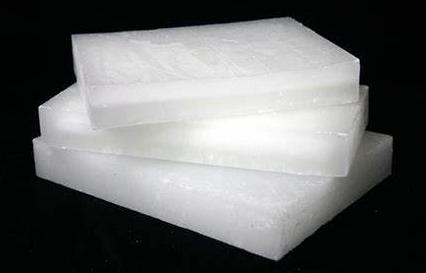
Fully refined paraffin waxes are a hard, white crystalline material derived from petroleum. Paraffin waxes are predominately composed of normal, straight-chain hydrocarbons. The water-repellent and thermoplastic properties of paraffin waxes make them ideal for many applications. Typical end uses include cereal, delicatessen, and household wrap, corrugated containers, candles, cheese and vegetable coatings, and hot melt adhesives. | | Composition | Paraffin wax is a mixture of solid higher alkanes, the molecular formula of the main component is CnH2n+2, where n=17~35. The main components are straight-chain alkanes, a small amount of alkane with individual branches and monocyclic cycloalkanes with long side chains; straight-chain alkanes are mainly n-docosane (C22H46) and n-octadecane (C28H58) . | | Wax | Wax is of two general types: (i) paraffin wax in petroleum distillates and (ii) microcrystalline wax in petroleum residua.
Paraffin wax is a solid crystalline mixture of straightchain (normal) hydrocarbons ranging from 20 to 30 carbon atoms per molecule, and even higher.
Paraffin wax is a solid crystalline mixture of straightchain (normal) hydrocarbons ranging from C20 to C30 and possibly higher, that is, CH3(CH2)nCH3 , where n≥18. It is distinguished by its solid state at ordinary temperatures (25°C, 77°F) and low viscosity (35–45 SUS at 99°C, 210°F) when melted. However, in contrast to petroleum wax, petrolatum (petroleum jelly), although solid at ordinary temperatures, does in fact contain both solid and liquid hydrocarbons. It is essentially a low-melting, ductile, microcrystalline wax.
Microcrystalline waxes form approximately 1–2% w/w of crude oil and are valuable products having numerous applications. These waxes are usually obtained from heavy lube distillates by solvent dewaxing and from tank bottom sludge by acid clay treatment. However, these crude wax products usually contain appreciable quantity (10–20% w/w) of residual oil and, as such, are not suitable for many applications such as paper coating, electrical insulation, textile printing, and polishes. | | Microcrystalline waxes | Microcrystalline waxes are a type of wax produced by de-oiling petrolatum, as part of the petroleum refining process. In contrast to the more familiar paraffin wax, which contains mostly unbranched alkanes, microcrystalline wax contains a higher percentage of iso-paraffin (branched) and naphthene hydrocarbons. It is characterized by the fineness of its crystals in contrast to the larger crystal of paraffin wax. It consists of high-molecular-weight saturated aliphatic hydrocarbons. It is generally darker, more viscous, denser, tackier, and more elastic than paraffin waxes, and has a higher molecular weight and melting point. The elastic and adhesive characteristics of microcrystalline waxes are related to the non-straightchain components that they contain. Typical microcrystalline wax crystal structure is small and thin, making them more flexible than paraffin wax.
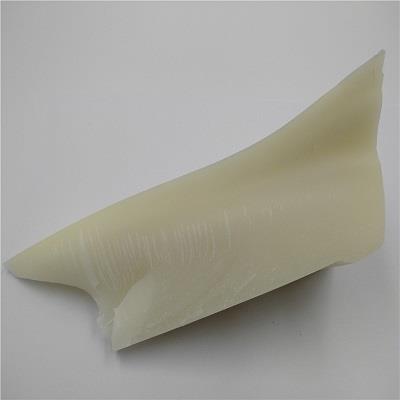
Microcrystalline waxes when produced by wax refiners are typically produced to meet a number of ASTM specifications, which include congealing point (ASTM D938), needle penetration (D1321), color (ASTM D6045), and viscosity (ASTM D445). Microcrystalline wax is also a key component in the manufacture of petrolatum. The branched structure of the carbon chain backbone allows oil molecules to be incorporated into the crystal lattice structure. The desired properties of the petrolatum can be modified by using microcrystalline wax bases of different congeal points (ASTM D938) and needle penetration (ASTM D1321). | | Uses | Used in the production of candles, crayons, wax paper, rubber, wires, cables, plates, waterproof materials, electrical insulation, food packaging, precision casting, general telecommunications equipment, textiles, printing, metal rust prevention, and other chemicals required by various industrial sectors raw material.Paraffin wax can also be used for oxidation to generate synthetic fatty acids. Paraffin wax can also be made into detergents, emulsifiers, dispersants, plasticizers, greases, etc.As a kind of latent heat storage material, paraffin wax has the advantages of large latent heat of phase change, small volume change during solid-liquid phase change, good thermal stability, no supercooling phenomenon, and low price. It is used in aviation, aerospace, microelectronics, etc. Various fields such as scientific and technological systems and house energy saving have been widely used. | | Occurrence | Paraffin wax is a hydrocarbon mixture extracted from certain distillates of petroleum, shale oil or other bituminous mineral oils. The main component is solid alkanes, which is odorless and tasteless, and is a white or light yellow translucent solid. Paraffin wax has many uses, mainly used in the manufacture of matches, fiberboard, tarpaulin and so on. | | Application | 1. Paraffin wax can be made into flake or needle crystals obtained by solvent dewaxing or freezing crystallization of wax, pressing dewaxing to obtain wax paste, and then solvent deoiling and refining. Used to make higher fatty acids, higher alcohols, matches, candles, waterproofing agents, ointments, electrical insulating materials, etc.2. Paraffin wax is divided into food grade (food grade and packaging grade, the former is excellent) and industrial grade. Food grade is non-toxic and industrial grade is not edible.3. Because of its high oil content, crude paraffin is mainly used to make matches, fiberboards, tarpaulins, etc. After adding polyolefin additives to paraffin wax, its melting point increases, adhesion and flexibility increase, and it is widely used in moisture-proof and waterproof packaging paper, cardboard, surface coating of certain textiles and candle production.4. After immersing the paper in paraffin wax, various wax papers with good waterproof performance can be prepared, which can be used in food, medicine and other packaging, metal rust prevention and printing industries; after paraffin wax is added to cotton yarn, the textiles can be soft, smooth and smooth. It is elastic; paraffin wax can also be used to make detergents, emulsifiers, dispersants, plasticizers, greases, etc.5. Fully refined paraffin and semi-refined paraffin have a wide range of uses. They are mainly used as components and packaging materials for food, oral medicines and certain commodities (such as wax paper, crayons, candles, carbon paper), coating materials for baking containers, and Fruit preservation, insulation of electrical components, improvement of rubber aging resistance and flexibility, etc. | | Description | Paraffin wax, also commonly called ‘paraffin’, is a colourless or white, tasteless, odourless,
translucent waxy solid. Paraffin wax has a typical melting point between about 46°C and
68°C. Pure paraffin wax is a combustible substance and insoluble in water but soluble in
petroleum solvents and stable under normal conditions of use. Paraffin has been identified
as an excellent electrical insulator. It is also used in the manufacturing of paraffin papers,
candles, food packaging materials, varnishes, floor polishes, to extract perfumes from
flowers, in lubricants, and cosmetics. It is also used in water-proofing wood, and cork. | | Chemical Properties | Paraffin wax is colorless or white with an odorless mass. It consists of a mixture of solid aliphatic hydrocarbons. Paraffin is used in the manufacture of paraffin papers, candles, food packaging materials, varnishes, floor polishes, to extract perfumes from flowers, in lubricants, and cosmetics. It is also used in waterproofing wood and cork. | | Uses | Paraffin wax can be used as a phase changing material in a wide range of applications which include solar based water heaters, microcapsules and thermal energy devices (TEDs). | | Uses | Paraffin Wax is used to embed tissues to be used in research. | | Uses | Paraffin wax, or hard
wax, is a mixture of solid hydrocarbons, mainly alkanes.
Paraffinwaxcan beadded to medicinal agents. Petroleumwax
and petrolatum are the only hydrocarbons permitted for use in
food products. Paraffin wax is used as a household wax and
extensively as a coating for food containers and wrappers. | | Definition | A solid mixture of hydrocarbons,
obtained from petroleum. | | Production Methods | Paraffin is manufactured by the distillation of crude petroleum or
shale oil, followed by purification by acid treatment and filtration.
Paraffins with different properties may be produced by controlling
the distillation and subsequent congealing conditions.
Synthetic paraffin, synthesized from carbon monoxide and
hydrogen is also available; | | General Description | White translucent tasteless odorless solids. Density 0.88- 0.92 g / cm3. Insoluble in water. Melting range 47-65°C. Used in candles, lubricants, crayons, floor polishes, cosmetics, chewing gum. | | Air & Water Reactions | Insoluble in water. | | Reactivity Profile | Paraffin wax, may be incompatible with strong oxidizing agents. Charring may occur followed by ignition of unreacted portion and other nearby combustibles. In other settings, mostly unreactive. Not affected by aqueous solutions of acids, alkalis, most oxidizing agents, and most reducing agents. When heated sufficiently or when ignited in the presence of air, oxygen or strong oxidizing agents, they burn exothermically. | | Health Hazard | Exposures to paraffi n for a prolonged period cause several types of skin disorders, The
adverse health effects to skin include chronic dermatitis, wax boils, folliculitis, comedones,
papules, melanoderma, and hyperkeratoses. Studies of Hendricks et al. indicated the
development of carcinoma of the scrotum in workers exposed to crude petroleum wax.
Carcinoma of the scrotum in occupational workers began with a normal hyperkeratotic
nevus-like lesion, which subsequently resulted in a squamous cell carcinoma. | | Flammability and Explosibility | Not classified | | Pharmaceutical Applications | Paraffin is mainly used in topical pharmaceutical formulations as a
component of creams and ointments. In ointments, it may be used to
increase the melting point of a formulation or to add stiffness.
Paraffin is additionally used as a coating agent for capsules and
tablets, and is used in some food applications. Paraffin coatings can
also be used to affect the release of drug from ion-exchange resin
beads. | | Safety Profile | A skin and eye irritant. Questionable carcinogen with experimental tumorigenic data by implant route. Many paraffin waxes contain carcinogens. Fumes cause lung damage. See also PARAFFIN HYDROCARBONS. | | Safety | Paraffin is generally regarded as an essentially nontoxic and
nonirritant material when used in topical ointments and as a
coating agent for tablets and capsules. However, granulomatous
reactions (paraffinomas) may occur following injection of paraffin
into tissue for cosmetic purposes or to relieve pain. Long-term
inhalation of aerosolized paraffin may lead to interstitial pulmonary
disease. Ingestion of a substantial amount of white soft paraffin has
led to intestinal obstruction in one instance. | | Synthesis | Synthesized by the Fischer–Tropsch process from carbon monoxide and hydrogen, which are catalytically converted to a
mixture of paraffin hydrocarbons. The lower molecular weight fractions are removed by distillation and the residue is hydrogenated
and further treated by percolation through activated charcoal. | | storage | Paraffin is stable, although repeated melting and congealing may
alter its physical properties. Paraffin should be stored at a
temperature not exceeding 40°C in a well-closed container. | | Regulatory Status | Accepted in the UK for use in certain food applications. Included in
the FDA Inactive Ingredients Database (oral capsules and tablets,
topical emulsions, and ointments). Included in nonparenteral medicines licensed in the UK. Included in the Canadian List of
Acceptable Non-medicinal Ingredients. |
| | Paraffin wax Preparation Products And Raw materials |
|